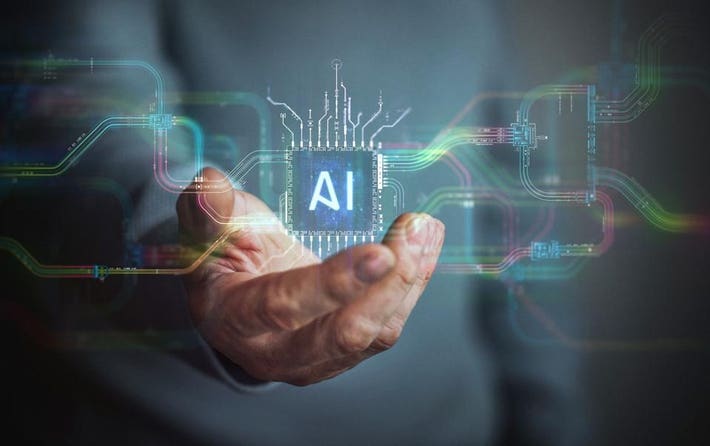
Introduction to AI in HVAC BMS
As we step into an increasingly digital world, the integration of AI tools in HVAC BMS systems is gaining momentum. The fusion of artificial intelligence with building management systems (BMS) is not just a trend but an evolution that promises enhanced efficiency and performance. For industry professionals, the potential of AI to transform HVAC (Heating, Ventilation, and Air Conditioning) systems is nothing short of revolutionary.
In this article, we delve into the multifaceted world of integrating AI tools in HVAC BMS systems, exploring how this integration is shaping the future of building management. Whether you’re a seasoned professional or new to the industry, understanding the impact of AI on HVAC systems is crucial for staying ahead in the field.
Understanding HVAC BMS Systems
Before diving into the specifics of AI integration, it’s important to grasp what HVAC BMS systems entail. A Building Management System (BMS) is a computer-based control system installed in buildings that manages and monitors the buildings mechanical and electrical equipment such as ventilation, lighting, power systems, fire systems, and security systems.
The Role of HVAC Systems
HVAC systems are integral to maintaining indoor air quality and comfort levels in buildings. They regulate temperature, humidity, and air quality, ensuring a comfortable environment for occupants. The addition of AI tools enhances the capabilities of these systems, making them smarter and more efficient.
Why AI Integration is the Future
AI brings a new dimension to HVAC BMS systems by enabling predictive maintenance, energy efficiency, and improved performance. The ability of AI to learn and adapt makes it a perfect match for the dynamic nature of building environments.
Predictive Maintenance
One of the standout benefits of integrating AI in HVAC systems is predictive fault management. AI tools can analyze data from HVAC systems to anticipate equipment failures before they occur, reducing downtime and maintenance costs.
Energy Efficiency
AI-driven systems can optimize energy usage by learning from historical data and adjusting settings in real-time. This leads to significant energy savings and a reduced carbon footprint, aligning with global sustainability goals.
Enhanced Performance
AI tools can continuously monitor and adjust HVAC operations to ensure optimal performance. This includes maintaining ideal temperature and humidity levels while minimizing energy consumption.
The AI Tools Transforming HVAC BMS
Several AI tools are making waves in the HVAC industry. These tools leverage machine learning algorithms to enhance system efficiency and performance.
Machine Learning Algorithms
Machine learning algorithms enable HVAC systems to learn from past data, predict future conditions, and adjust operations accordingly. This results in more accurate temperature control and energy efficiency.
Natural Language Processing (NLP)
NLP allows building managers to interact with HVAC systems using natural language, simplifying system management and troubleshooting.
Real-World Applications
Several organizations and facilities have successfully implemented AI tools in their HVAC BMS systems, reaping significant benefits. For example, the Bluons Generative AI Tool is aiding HVAC operators in streamlining operations and improving efficiency.
Case Study: Smart Buildings
Smart buildings equipped with AI-integrated HVAC systems have reported reduced energy consumption and enhanced occupant comfort. These systems can automatically adjust settings based on occupancy and weather conditions.
Industry Adoption
The adoption of AI tools in HVAC systems is on the rise, with many industry leaders recognizing the potential for improved efficiency and cost savings. As AI technology continues to evolve, its application in HVAC BMS systems is expected to expand.
Challenges and Considerations
While the benefits of integrating AI tools in HVAC systems are clear, there are also challenges and considerations to address.
Data Security and Privacy
With increased connectivity comes the risk of data breaches. Ensuring data security and privacy is paramount when implementing AI-driven systems.
Cost Implications
The initial cost of integrating AI tools can be high, but the long-term savings in energy and maintenance costs often justify the investment.
The Future of AI in HVAC BMS
The future of AI in HVAC BMS systems looks promising. As AI technology advances, its capabilities in enhancing energy efficiency, improving indoor air quality, and reducing operational costs will continue to grow.
Emerging Trends
Emerging trends such as AI for indoor air quality monitoring are set to revolutionize the way we manage building environments. These trends highlight the potential for AI to play a pivotal role in creating smarter, more sustainable buildings.
Conclusion
In conclusion, the integration of AI tools in HVAC BMS systems is not just a technological advancement; it’s a necessary evolution for the future of building management. By embracing AI, industry professionals can ensure more efficient, reliable, and sustainable HVAC systems.

FAQs
What is the role of AI in HVAC systems?
AI enhances HVAC systems by enabling predictive maintenance, optimizing energy usage, and improving overall system performance.
How does AI improve energy efficiency in HVAC systems?
AI tools analyze historical data and adjust system settings in real-time, leading to significant energy savings.
What are the challenges of integrating AI in HVAC systems?
Challenges include ensuring data security and privacy, as well as managing the initial costs of AI integration.
This article contains affiliate links. We may earn a commission at no extra cost to you.
